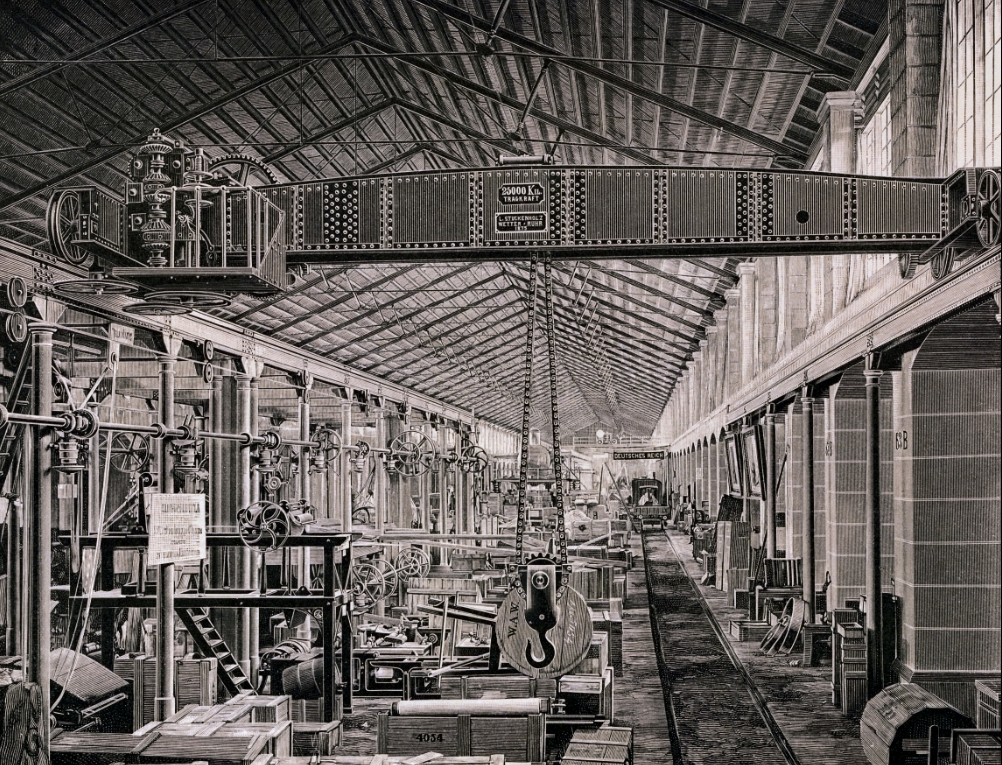History of Overhead Cranes

History In 1876 Sampson Moore in England designed and supplied the first ever electric overhead crane, which was used to hoist guns at the Royal Arsenal in Woolwich, London. Since that time Alliance Machine, now defunct, holds an AISE citation for one of the earliest cranes in the USA market. This crane was in service until approximately 1980, and is now in a museum in Birmingham, Alabama. Over the years important innovations, such as the Weston load brake (which is now rare) and the wire rope hoist (which is still popular), have come and gone. The original hoist contained components mated together in what is now called the built-up style hoist. These built up hoists are used for heavy-duty applications such as steel coil handling and for users desiring long life and better durability. They also provide for easier maintenance. Now many hoists are package hoists, built as one unit in a single housing, generally designed for ten-year life, but the life calculation is based on an industry standard when calculating actual life. See the Hoists Manufacturers Institute site for true life calculation which is based on load and hours used. In today's modern world for the North American market there are a few governing bodies for the industry. The Overhead Alliance is a group that represents Crane Manufacturers Association of America (CMAA), Hoist Manufacturers Institute (HMI), and Monorail Manufacturers Association (MMA). These product counsels of the Material Handling Industry of America have joined forces to create promotional materials to raise the awareness of the benefits to overhead lifting. The members of this group are marketing representatives of the member companies. Early manufacture 1830: First Crane company in Germany Ludwig Stuckenholz company. 1840: mass production of overhead cranes starts in Germany 1854: Sampson Moore & Co in Liverpool England patents a new winch mechanism that allowed the lifting of heavier weights (such as naval guns) by an electric motor. 1861: the first steam powered overhead crane is installed by John Ramsbottom at the Crewe Railway workshops. Power was transmitted to the crane from a pulley driven by a stationary engine through an endless cotton rope. 1887: the Ludwig Stuckenholz company introduces electrical components to overhead cranes determining industry design. 1910: the first mass-produced electric motor hoist starts in Germany.
Back
